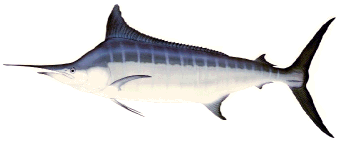
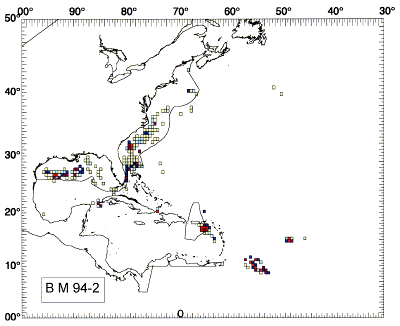
The scientific community already accepts the fact that there is both a North Atlantic and a South Atlantic population of swordfish, which do not interbreed.� We believe there is also a northern hemisphere population of blue marlin (and white marlin).� It spawns at these "hot spots" during the northern hemisphere's spring.� The southern hemisphere population of blue marlin (and white marlin) spawns in the Royal Charlotte Bank area off Cabo Frio Brazil (site of many world record blue and white marlin catches) during the southern hemisphere's spring (thus phased 6 months behind the northern hemisphere).� For larger scale maps, see our Bycatch Maps section: (white marlin) (blue marlin).� The catch of blue marlin to the north of the primary spawning areas during the second quarters reflects the return of some fish to their summer and fall feeding grounds following spawning.
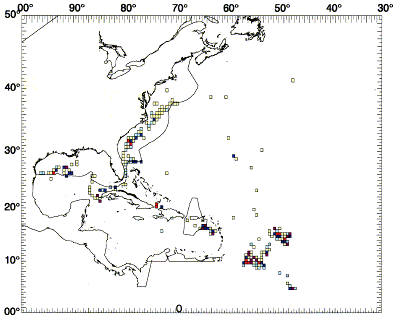
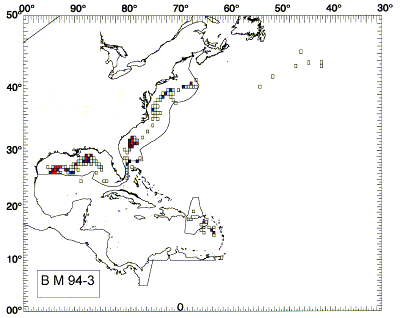
The longline fleet follows swordfish and the larger tunas over very broad expanses of ocean throughout their annual migrations, concentrating fishing effort where catches of the target species is highest.� The extent of the area fished each year is depicted here (1995, 1996 and 1997).� "Hot spots" where blue marlin (and white marlin) are caught in the greatest number are very small in relation to the total area "sampled" annually by the U.S. longline fleet, and such areas do not necessarily coincide with the areas where longliners' effort and catch per unit effort of their target species is the greatest.� However, longliners do exert much effort in these species' prime spawning and feeding areas (the "hot spots"), which of course is the problem.
By examining the charts presented on this website showing where U.S. longline vessels catch the greatest quantities of blue marlin, white marlin, sailfish and swordfish, one can easily see that all these populations depend on the same "hot spots" throughout their annual migratory cycle.� Just like salmon, they predictably return to very specific (and relatively quite small) sites for spawning during the spring of each year and to their primary fall feeding areas.� We would expect that a distinct race returns each year to each of their spawning area "hot spots."� (For example, we suspect there is a "Yucatan Channel race" of blue marlin that spawn annually between Cuba and Mexico's Yucatan peninsula.� We expect there are also "Yucatan Channel races" of white marlin, sailfish and swordfish just as there are likely "Florida Straits races" and "Mona Passage races" of all four, etc.)�
Some Make the "Big Circuit" Around the Entire Sargasso Sea
Over the course of their annual migratory cycle, some of the largest individuals of the larger species (blue marlin, swordfish, bluefin tuna and probably white marlin) may circumnavigate the North Atlantic Ocean following the major surface current gyre.� However, from tag returns it is apparent that most adult blue marlin, swordfish, white marlin and sailfish migrate up and back down the east coast of the United States (following the western side of the Gulf Stream and along the edge of the continental shelf).
Swordfish,� Billfish,� Tunas� and� Sharks
Critical Habitat Maps for White Marlin
Facts about Atlantic Population Declines
White Marlin ESA Listing Petition
Articles about Big Game Fish and Fishing
Photos of Big Game Species
List of All Pages on this Website
Home
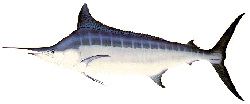
9814 Kensington Parkway
Kensington Maryland 20895-3425
(T) 301-949-7778��� (Fax) 301-949-3003